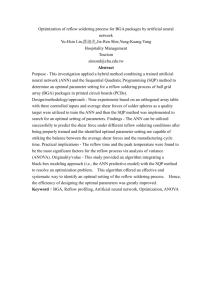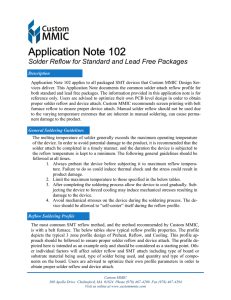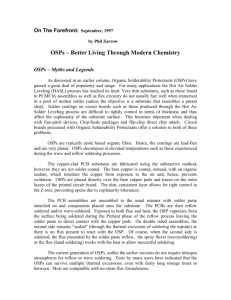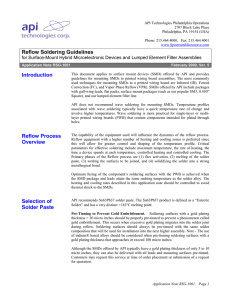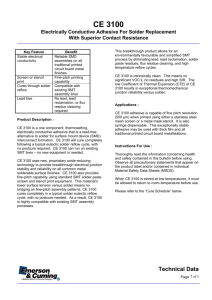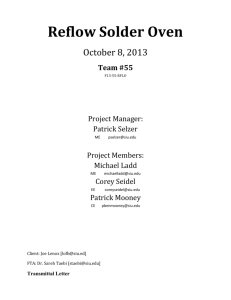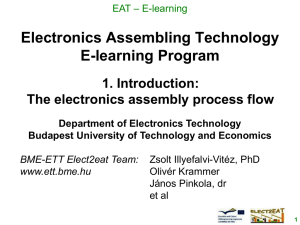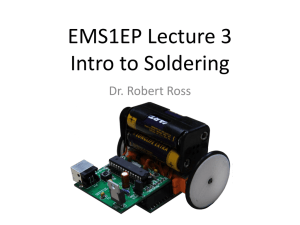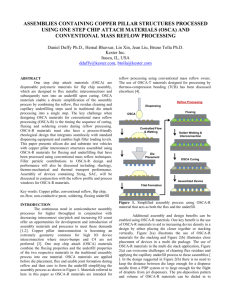ECE Projects Lab
advertisement
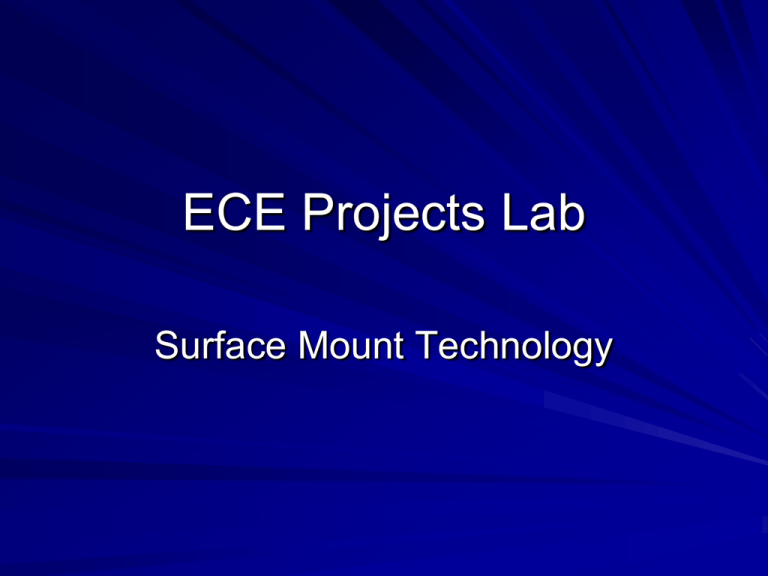
ECE Projects Lab Surface Mount Technology What is SMT? Surface Mount Technology Used primarily in industry Same circuitry with much smaller components Was not intended for individual soldering, but gaining popularity SMT Components “Reflow” a thermal process in which solder paste is used to electrically connect components to their attachment pads. It is the most common means to attach a surface mounted component to a circuit board “Reflow temperature” is the temperature at which the solder paste changes state from solid to liquid SMT Board Why SMT (advantages)? Much smaller size Components on both sides of board Leads can be much shorter reducing inductance and resistance thereby increasing performance Prototyping is more indicative of the final product How to SMT solder (techniques) Fine tip soldering – Uses conventional soldering techniques on a much smaller scale Hot plate reflow – Useful for single ICs with limited footprint Oven reflow – Uses soldering paste and reflows entire board How to SMT rework Solder wick – Uses fine mesh conductive Copper braid. Heat and capillary action pulls excess solder away Hot air reflow – Uses hot air to reflow the solder with components present De-Solder vacuum plunger/sucker – Uses small negative pressure to suck up excess solder Fine Tip Soldering Conventional Equipment Useful for Larger components Causes eye strain Requires a steady hand Fine Tip Soldering Specialized Fine-tip tools Hot-Air Rework Station AM6500 by JBC – – – – Fine tip solder tools Desoldering tools Hot tweezers Hot air gun Hot plate reflow useful for smaller boards as heat distribution on a hotplate is far less uniform than a convection oven end point is monitored visually Oven reflow Typical Reflow oven – Large and bulky – Expensive $$$ Cuisinart TOB 165 – Just as good – A small fraction of the cost Oven Reflow Overview After applying solder paste and setting components, the board is inserted to be “cooked” End result is a perfectly soldered board for a fraction of the cost (no eye strain either) Reflow Profile The temperature of the reflow process must: – be precise enough to not damage IC’s through excess heat – be sufficient for reflow of solder Oven Reflow Steps Apply soldering paste Cook! Set IC’s and components Touch up (here using solder wick) Industrial SMT Movie Silicon Run II Copper Solder Wick (rework) useful for removing excess solder braided copper mesh is used to remove solder via capillary action Fine-tip or conventional soldering iron is used for heating braid and solder Hot air reflow (rework) Hot-Air Rework Station AM6500 by JBC – – – – Fine tip solder tools Desoldering tools Hot tweezers Hot air gun How hot air reflow works Hot air used to desolder IC Vacuum extractor pulls IC after solder flows De-Solder vacuum plunger/sucker (rework) Uses small vacuum to pull solder away from board Hand-held manual version Heated tip & vacuum combined on SMT rework station Summary Fine tip soldering is hard, but essential sometimes Hotplate or Oven reflow are great for creating a whole board at once Rework techniques include Copper wick, Hot-air reflow, and de-solder vacuuming ECE Projects Lab can do it all Credits/Work cited http://en.wikipedia.org/wiki/Surface-mount_technology – General SMT info http://www.heinc.com/jbc/repair.html – Hot air reflow station website http://www.bidservice.com/Browses/NF_Detailed_Item_View_new.a sp?ProductID=20069 – Place to purchase typical reflow oven http://www.seattlerobotics.org/encoder/200006/oven_art.htm – Another group that has done a similar project with a toaster oven http://www.circuitcellar.com/library/print/0704/Lacoste_168/ – Thermal profile for a toaster oven Design Lab Website Presentations available Online Reflow Tutorial http://www.ee.duke.edu/DesignLab/ Thanks!
